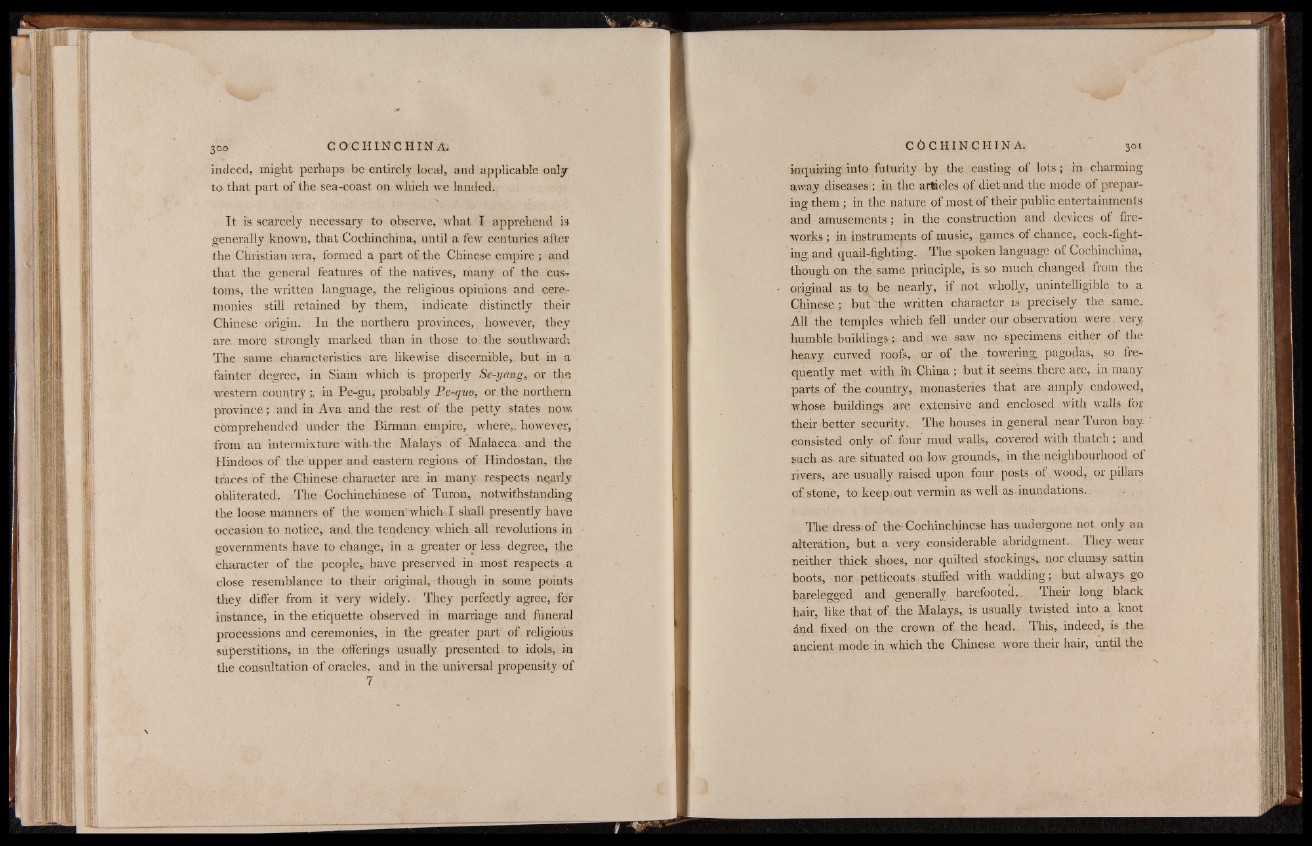
indeed, might perhaps be entirely local, and applicable only
to that part of the sea-coast on which we landed.
I t is scarcely necessary to observe, what I apprehend i3
generally known, that Cochinchina, until a few centuries after
the Christian sera, formed a part of the Chinese empire ; and
that the general features of the natives, many of the cust
toms, the written language, the religious opinions and ceremonies
still retained by them, indicate distinctly their
Chinese origin. In the northern provinces, however, they
are more strongly marked than in those to the southward».
The same characteristics are likewise discernible,, but in a
fainter degree, in Siam which is properly Se-yang, or the
western country;, in Pe-gu, probably Pe-quo, or. the northern
province; and in Ava and the rest of the petty states now
comprehended under the Birman empire, where,, however,
from an intermixture with- the Malays of Malacca, and the
Hindoos of the upper, and eastern regions of Hindostan, the
traces of the Chinese character are in many, respects nearly
obliterated. The Cochinchinese of Turon, notwithstanding
the loose manners of the women' which, I shall presently have
occasion to notice, and. the tendency which all revolutions in
governments have to change, in a greater or less degree, the
character of the people,, have preserved in most respects a
close resemblance to their original, though in some points
they differ from it very widely. They perfectly agree, for
instance, in the etiquette observed in marriage and funeral
processions and ceremonies, in the greater part of. religious
superstitions, in the offerings usually presented to idols, in
the consultation of oracles, and in the universal propensity of
7
inquiring into futurity by the casting of lots; in charming
away diseases; in the articles of diet and the mode of preparing
them ; in the nature of most of their public entertainments
and amusements; in the construction and devices of fireworks
; in instruments of music, games of chance, cock-fighting
and quail-fighting- The spoken language of Cochinchina,
though on the same principle, is so much changed from the
original as tq be nearly, if not wholly, unintelligible to a
Chinese; but the written character is precisely the same.
All the temples which fell under our observation were very
humble buildings;. and we saw no specimens either of the
heavy curved roofs, or of the towering pagodas, so frequently
met with .id China; but it seems , there are, in many
parts of the country, monasteries that are amply endowed,
whose buildings are extensive and enclosed with walls for
their better security. The houses in general near Turon bay
consisted only of four mud walls, covered with thatch; and
such as are situated on low. grounds,, in the neighbourhood of
rivers, are usually raised upon four posts of wood, or pillars
of stone, to keep i out vermin as well as inundations..
The dress: of the-Cochinchinese has undergone not only an
alteration, but a very considerable abridgment.. They wear
neither thick shoes, nor quilted stockings, nor clumsy sattin
boots, nor petticoats stuffed with wadding; but always go
barelegged and generally, barefooted,. Their long black
hair, like that o f the Malays,, is usually twisted into a knot
and fixed on the crown of the head. This, indeed, i s ,the
ancient mode in.which the Chinese, wore their hair, until the